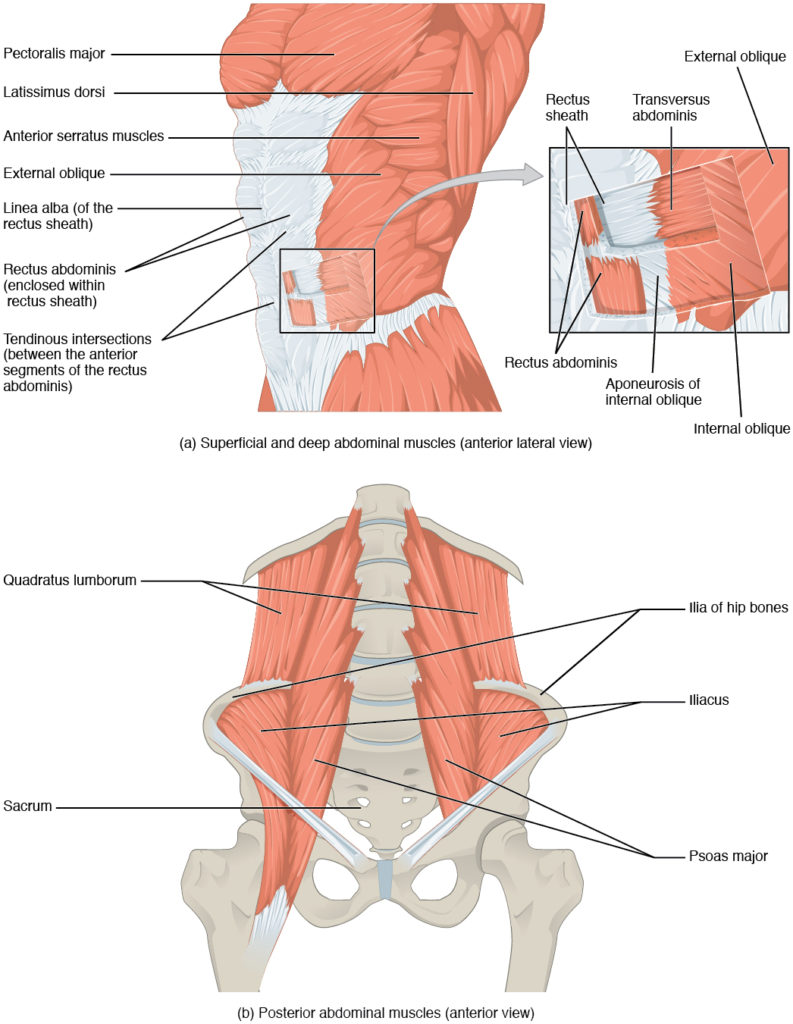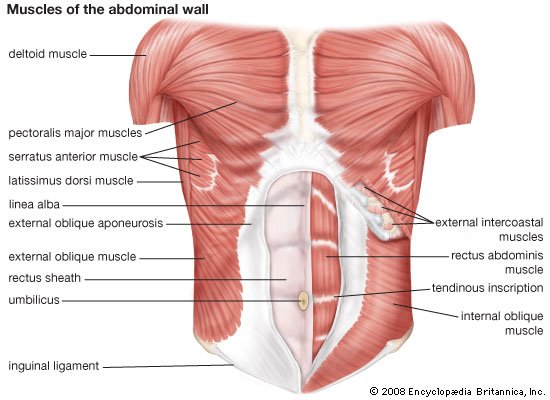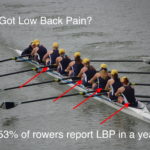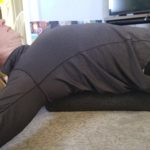Rowing and Core Strength:
Rowing is unique in so many ways, but the sequence of how we move and how we translate force through our body is probably the most interesting biomechanically. We move backward for one. We function in a gravity reduced plane. We use our extensor muscles of our body or the muscles of our back and front of our legs, to create power for movement. We sit on an unstable surface and yet have our hips as the main connection of our entire movement pattern. Land-based sports generally rely on your interaction and control of your feet against the ground (which is typically stable) and then your body stacked above that. Rowing relies on the interaction of your feet on the footplate connected to your hips and the interaction of your hips on the seat connected to the boat as a whole, which is not stable. How you control both, your leg position (hips and knees maintaining alignment) and your body stacked above your pelvis affect your ability to transfer speed from the effort you put in each stroke.
Rowing on the water is anything but static! You have current, wind, waves, floating debris, or animals, you have your boatmates to respond to, the change in momentum of your mass as you change directions on the slide, and how you control and move your own body in all planes of movement. How on earth do we put so many things into the puzzle and still manage to move boats quickly? We need MULTIDIRECTIONAL STABILITY!!!!
This means strength and stability through the hips, core, and shoulders primarily. You need to control movement and adjust to movement at each of these points to have a successful, fast stroke. I have talked about the hips and shoulders previously. Keeping your hip abductors, internal and external rotators strong to control movement, and making your hip extensors strong to contribute to the power of your stroke. For your shoulders it’s similar, you need to keep your rotator cuff, lats and serratus anterior strong to help build a stable platform for both posture throughout the stroke and to protect your shoulders as they translate force through the handle.
What do you know about the core?
You look back on your core exercises and most likely you’ll have done a lot of crunches, planks, scullers, Russian twists, and generally a lot of isolated ab work. So I raise the question, “Is this enough?” Is being able to hold a plank for crazy amounts of minutes the way you make your body strong for rowing? Is doing 100+ crunches a day the way you make your body strong for rowing? Does having a 6-pack mean your core is strong enough for rowing? I would argue no.
When a physical therapist or physio says “core” we are not only referring to your rectus abdominis. If anything, to be quite honest, this might be the least important muscle of your core as a whole. Your core is made up of so much more.
Your “Core” Muscles Include:
- Rectus Abdominis
- External Obliques
- Internal Obliques
- Transverse Abdominis
- Quadratus Lumborum
- Iliacus and Psoas
- Erector Spine and Multifidi
I would even argue that your Latissimus Dorsi, Lower traps and your glutes can contribute to your overall “core”. If you have been to physical therapy or a physio for back pain, hip pain or most athletics based body pain, you maybe have tried some more core work that helps your body manage the dynamic forces of rowing.
Your CORE and rowing:
Rowing is DYNAMIC! Rowing is not just anterior abdominal strength it demands contribution and participation from your lower trunk and hips in all degrees of motion. You have to control how your body moves at the same time that you use your core to resist how your environment is trying to make you move. This might be a huge headwind or tailwind, a crosswind, rush throwing you up the slide, you name it and something is trying to make it difficult for you to stay in the middle of the boat going up and down the slide. Your core also matters for your ability to carry a boat on one side of your body or on top of your head; for getting the boat into or out of the water, pressing a boat overhead, for carrying oars in and out of the boathouse, for reaching to your rigger to change a pop-washer while on the dock or the water. You use your core in all its many functions is constantly used in everything involved in rowing.


What happens if my core is not strong enough?
If your core is not strong enough for the many dynamic demands of rowing, it is likely you might injure your back, shoulder, hip, knee, or ribs because something will end up taking too much stress that your core should have controlled. Studies have shown that with increasing rates and progression into a workout, your erector spine or back extensors start to fatigue and you have less control of your back posture, making your low back more rounded, putting your shoulders at a poor mechanical position and increasing the load into your low back (Abstract here: Wilson). If you cannot use the muscles in your low back to stabilize a boat you will get torsional stress through your spine (Buckridge 2014) and you might get an asymmetrical push off your footplate changing the amount of effort that translates to horizontal force to move the boat. Every study I read and discussed in my post about Low Back Pain speaks to the necessity of control and connection of your low back and your pelvis. Your core is responsible for the majority of this control and connection. There have been a few studies that have tried to use planks and sustained back extension postures to assess core strength and how it predicts or links to low back pain but in general the studies have been inconclusive. I think this is because rowing is way more dynamic than just a plank or an extension hold. You need to be able to control against forces wanting to tip your body and boat side to side, forces wanting to push you into flexion, forces wanting to push you into extension, and every combination of these.
How do I build a strong core?
Doing a little each day is one way to start. Add a few dynamic core exercises into your warm-up that you do pre-workout every day. Make sure your lift days demand that you control against larger external loads so you can build better resilience, a stronger foundation, and have your core support you for longer and more challenging workouts. Just depending on rowing alone to make your core strong enough to do its many jobs is not sufficient. Being able to use your core dynamically while breathing and creating and withholding against large amounts of stress is huge! It’s challenging to put these pieces together but there are lots of options for how to work on it.
Step One-Firing your core correctly:
These are my a few favorite exercises to get someone to feel that they are using their core correctly.
- Brace and breathe- Learn how to properly activate your core while breathing!
- Dead Bug- A good anti flexion and anti extension exercise. The dead but is always a great exercise to work on core stability. This is a great option for a warm up for a row or a lift!
- Glute Hip Bridge- Your glutes and core need to work together. Learning how to brace, breathe and use your glutes is a great skill to help with posture through your stroke and opening your body with connection through the drive.
**Dead bugs and Glute Hip Bridges are always fantastic exercises, they can be done with a added load, changes in tempo, or with the addition of cross-body tension to continue using them to challenge your core.

Step Two- Challenge Your Stability:
Here are a few ideas to challenge your core dynamically. Remember with all of these, there are ways to modify based on where you are at. You should make them harder or easier depending on what your body needs. Keep in mind the basic principles you learned in trying to brace and breathe, you can’t hold your breath and row so you should breathe while you do core!
Here is an example using a side plank of how many ways you can challenge your core with one position. Remember, the goal is to create movement to control, not just to hold for time.
Side planks are great for working your strength to control the set of the boat, to help you lift and carry boats safely and help keep your hips and low back working together!

Step Three- Mix it up:
Give yourself and your body some variety! Below are six examples of different options for core exercises that challenge your control and stability in all planes. Here is how these exercises challenge you and how they relate to rowing!
- Anti-Extension: Physioball fallout, alternating bird dog, table plank with shoulder tap–> control at the finish, posture while rowing
- Anti-flexion: Goblet carry with a march—> control at the catch and posture while rowing
- Anti side bend: Suitcase carry—> control the set of the boat AND carrying equipment
- Anti-rotation: Split stance press–> control of the set, control into catch, control at the finish




